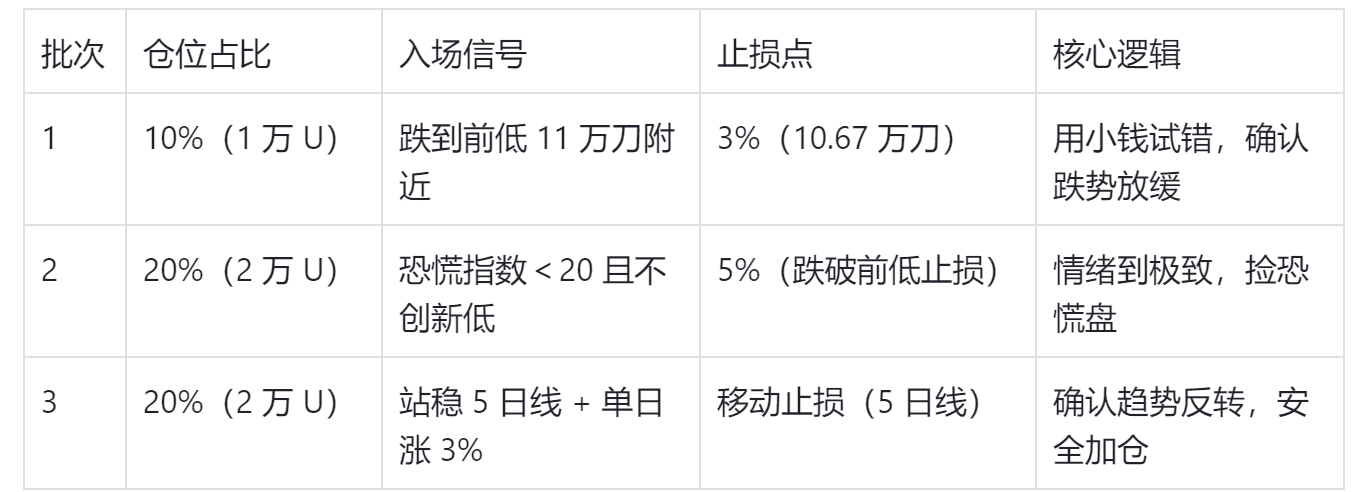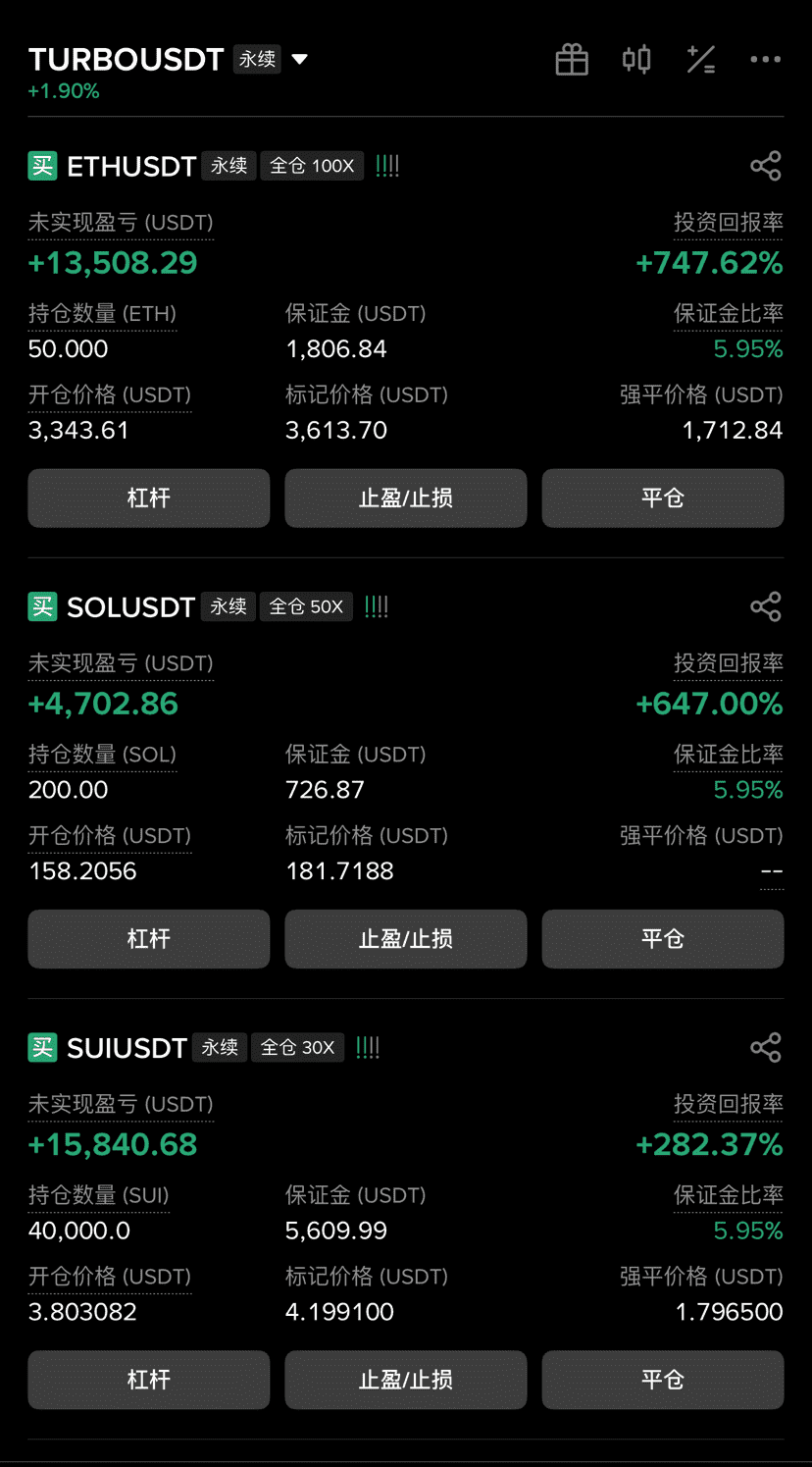On the night of the non-farm payroll crash, the candlesticks were flashing green on the screen. Trump's remark 'the non-farm data is fake' acted like a bomb, causing BTC to drop from $120,000 to $113,000. Over 200 messages flooded in the background, all asking the same question: 'Can we buy the dip now?' I was staring at the data of the 200,000 liquidated accounts on CoinGlass, recalling the moment in 2022 during the 312 crash when I was fully invested buying the dip and lost all 1.5 million. Only then did I understand: buying the dip in a bad market isn’t about betting on size; it’s about weaving a safety net with position diversification and stop-loss orders.
The current market is like a fire scene drenched by heavy rain; panicking people are rushing out while the calm ones crouch at a safe distance, counting the falling sparks — which are opportunities that can spread rapidly and which are traps that will burn you. Today, I will break down 3 iron rules for buying the dip, along with a limited-time positioning table, allowing you to catch opportunities while others panic and not get hurt by aftershocks.
1. First look at the 'background of the crash': is it a crisis of confidence or a collapse of value?
This wave of decline from $120,000 to $113,000 resulted in $2 billion liquidated within 24 hours, but digging into the data reveals two key signals:
1. Major coins drop harder than altcoins.
BTC dropped by 6.8%, ETH dropped by 7.2%, while the average drop for the top 50 altcoins was 4.5% — indicating that leveraged long positions were being liquidated (panic selling), not that capital was genuinely fleeing mainstream assets. The 519 crash of 2021 also exhibited this characteristic, rebounding 15% just 3 days after the liquidation wave.
2. Spot funds are secretly buying.
The large net inflow on OKX shows that below $115,000, BTC's spot buy orders suddenly increased 3-fold, while contract short positions decreased — this signals that institutions are picking up panic orders, just like when Grayscale added 12,000 BTC during the chaotic 312 crash in 2020.
These two points are enough to prove that now is a crisis of confidence, not a collapse of value. Just like gold during the 2008 financial crisis, the holes created by short-term panic often present opportunities for medium-term positioning. But this does not mean you can just go all in — 80% of the $200,000 accounts that went bankrupt were retail investors who 'went all in to buy the dip'.
2. The correct posture for buying the dip: use '3 batches of bullets' to catch the drop, rather than using 'a whole box of explosives' to gamble on the rebound.
On the night of last Friday's crash, my only instruction to students was: 'Split into 3 batches, wait for 3 signals, and if it's not time, just watch the show.'
The first batch of bullets (10% position): wait for the 'panic pause button'.
Use 10% of total funds to test the waters when BTC drops near previous lows (e.g., $110,000), set a stop-loss at 3% (buying the dip at $110,000 and stopping out at $106,700, with a maximum loss of 3%). The purpose of this step is not to make money, but to confirm that the 'downtrend is slowing down' — just like extending the tip of an umbrella in heavy rain to see if the rain will get heavier.
Student Akai used $50,000 as principal, invested $5,000 in the first batch to buy BTC spot, and set a stop-loss at $106,700. Although it dropped to $113,000 the next day, resulting in an unrealized loss of $200, he wasn’t worried at all: 'This fluctuation is much smaller than when I was trading contracts before.'
The second batch of bullets (20% position): wait for the 'emotional thermometer to cool down'.
When the Fear & Greed Index drops below 20 and doesn't create new lows for 3 consecutive days, invest another 20% of your funds. When LUNA collapsed in 2022, the Fear & Greed Index dropped to 9, and I increased my position at that time, later making a 40% profit on the rebound. Now the index is still at 28, indicating that emotions have not reached extremes; rushing to increase your position will only lead you to buy halfway up the mountain.
The third batch of bullets (20% position): wait for the 'trend signal light to turn green'.
Must meet two conditions: BTC stabilizes above the 5-day line, and the daily increase exceeds 3% (confirming rebound momentum). Only then invest another 20%, keeping your total position to 50% — always leave half in cash to cope with 'another black swan event'.
3 batches of bullet positioning table (taking $100,000 as an example):

Three of the easiest pitfalls for buying the dip, where 180,000 out of 200,000 liquidated accounts have fallen for.
1. Treat 'large drops' as 'buy dip signals'.
Some people rush in when BTC drops by 10%, forgetting that in 2022 it fell from $69,000 to $15,000, with countless instances of 'large drops' appearing in between. Remember: how much it drops is not important; what matters is whether there are signals to stop the decline. It’s like a person falling from the 10th floor; they can't be caught just because they fell 5 floors; you have to wait until they hit the bottom and bounce back.
2. Using contracts to buy the dip amplifies risks.
During this wave of plummeting, those who bought the dip with 10x leverage could double their investment with just a 3% rebound in BTC, but a further 5% drop would liquidate them. In contrast, those buying the dip with spot trades could afford a 20% drop without increasing their position, and would still have a chance to break even. In a bad market, leverage acts as an accelerator, but it accelerates you to hell.
3. Not diversifying your position, going all in leaves no backup.
The saddest case I’ve seen: a student invested $100,000 to buy the dip, but BTC dropped another 8%. He had no money to add to his position and had to cut losses, hitting the lowest point. However, those who diversified their positions first lost 8% on the first batch but could lower their costs on the second batch — buying the dip isn’t about who buys lower; it’s about who can endure until the rebound.
Four, the 'lurking tactics' in a bad market: when others panic, you should do these 3 things.
Now, open your account. Regardless of whether you have 10,000 USDT or 1,000,000 USDT, following these 3 steps is 10 times more useful than cursing the market while staring at the candlestick chart.
1. First calculate how much you can withstand in 'extreme situations'.
Suppose BTC drops to $100,000 (another 11% drop), how much would your total position lose at most? If you enter in 3 batches, the first batch loses 3%, the second batch loses 5%, the total loss will not exceed 5%; but if you go all in, you might lose 11%, and your mentality will collapse directly.
2. Physically isolate 'buying dip funds' from 'living expenses'.
Use a dedicated account to buy the dip, and the money inside should be left for at least 6 months. Last week, a student used mortgage funds to buy the dip, and after a 5% drop, he was forced to cut losses. This kind of 'kneeling to make money' mentality will never win against the market.
3. Spend 10 minutes daily checking the 'fear indicators' instead of looking at candlestick charts.
The Fear & Greed Index, liquidation data (CoinGlass), and the flow of major funds are more telling of 'how cold the market is' than candlestick charts. Just like dressing according to the temperature in winter, if it drops below -10°C, wear more (buy less); if it approaches 0°C, prepare to take off some clothes (add to positions).
A piece of honest advice for dip buyers.
After this wave of market ends, those who can smile counting money will definitely be those who are currently 'daring to buy but not buying much'. In 2022, I bought BTC at $18,000 not in one go, but in 7 batches, buying from $18,000 down to $15,000, and finally averaging a cost of $16,500, making an 82% profit when it rebounded to $30,000.
Right now, you don’t need to rush to prove how insightful you are; you just need to do one thing: divide your bullets into 3 batches and wait for the signal to pull the trigger. At the market's worst, your patience is the best capital — the chips others lose in panic are gifts prepared for you, but the premise is that you must be able to catch them and not be hurt.
When the next signal appears, I will synchronize the changes of 3 indicators in real-time and guide everyone to add to their positions in batches. If you want to quietly position in a bad market, you can follow me — the secret to buying the dip has never been about guessing the lowest point; it’s about being able to aim steadily and slowly pull the trigger while others are panicking and firing wildly.
Remember: the market always rewards 'calm hunters', not 'crazy gamblers'. The more you can endure now, the more you will earn during the rebound.
